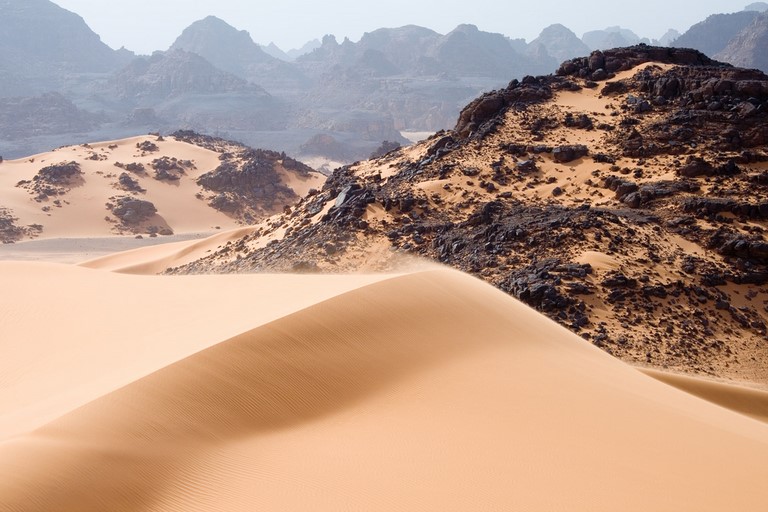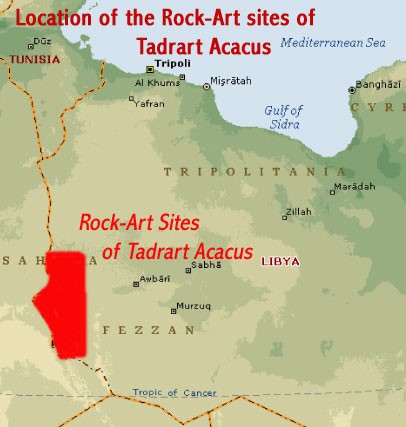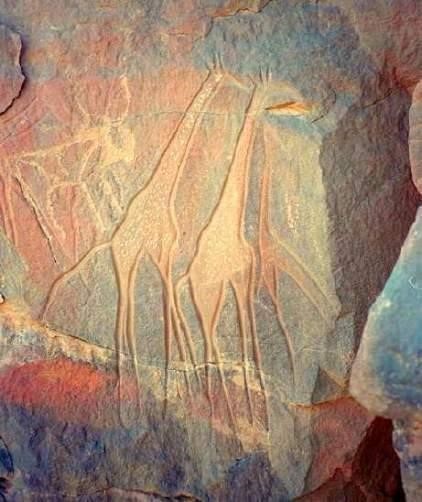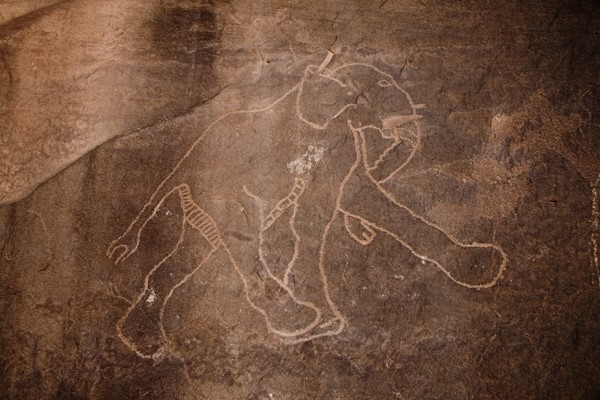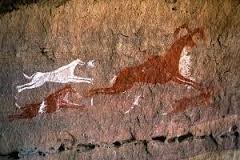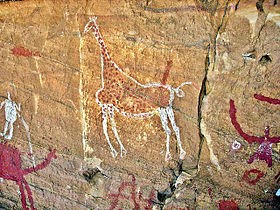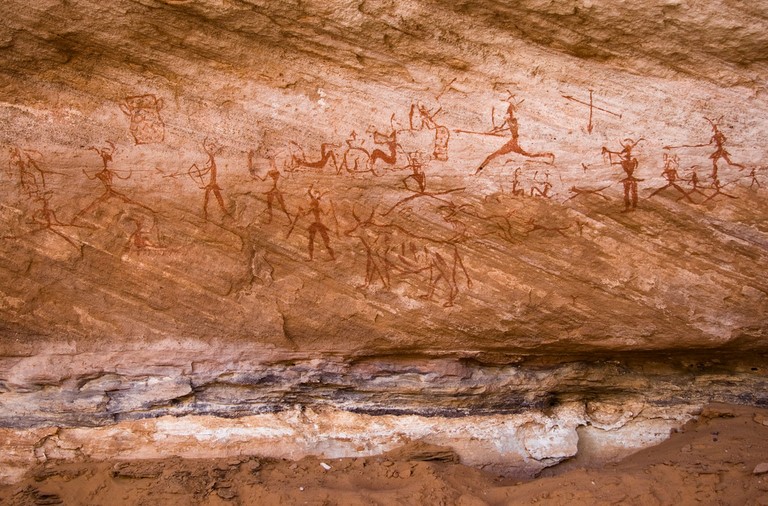Libyan rock-art erased by Jihadists
Tadrart Acacus: 12,000 year of history wiped out with white-spirit
In the desert of the Tadrart Acacus, in Southwestern Libya, rock art dated as far back as 12,000 BC stands as witness to a rich African fauna and to human settlement long gone. Now, it is falling victim to a political catastrophe, as occupying Jihadist fighters are erasing all traces of human history in this area which they claim as their own.
The following article has been published by French journalist Jacques-Marie Bourget on April 20th, 2014 on the website Mondafrique.
Aziz Alhashi, a local journalist of the city of Ghat, which is a kind of lost Atlantis of the Fezzan desert in the Southwest of Libya rang the alarm. He knocked at the doors of the French Chaîne 24 TV channel announcing: « The rock art sites of the Tadrart Acacus are in grave danger. Using detergents, men are attempting to erase the paintings while others are chiselling away at the rock engravings…” The massif of the Tadrart Acacus is a brone-dry mountain, weatherworn, the rocks of which have been turning to sand irremediably for centuries. Yet, on the walls left standing, one can still find a great number of rock paintings and carvings left behind by a succession of artists over 121 centuries. Experts have dated the first petroglyphs to 12,000 BC, the most recent ones to the 1st century AD. The only defence of these masterpieces lies with UNESCO, which has put the Tadrart Acacus on its list of World Heritage Sites in 1985. One might as well say, they depend on defence by a rubber sword.
If among the vandals one finds the usual crowd of morons capable of writing soccer slogans on the walls at Angkor Vat, the kings of eradicators are assuredly those religious fanatics whom the preachers of Saudi Arabia and Qatar have taught that anything that doesn’t exist for the greater glory of Allah has no right to be. On this doxa, these fools of God have already blown up the Buddhas sculpted in the rock at Bamiyan, in Afghanistan. In the Tadrart, 12,000 years of history spread over 250 square kilometres are being washed away with white-spirit. These « surface technicians » work on the principle that one hundreds and forty centuries ago, neither Allah nor any one of his divine competitors were at hand. So let’s do away with Prehistory.
This crushing reality is also a metaphor for the hell which Lybia has become. The country has been left over to Mafiosi, to crazed religious fanatics and experts in chaos to roam at ease. In Benghazi, where the CIA itself still doesn’t have a clue about who may have killed the American diplomats, the city is in the grip of religious gangs. It’s the same in Derna as well as in the oil harbour of Al-Sedra, where militias are in charge and attempt to load the crude for their own profit. Today, liberated Libya produces only a quarter of what the wells were spewing at the time of the Gaddafi dictatorship. One Prime Minister ran away, succeeded by another who held out for just a few hours. The country is a ship adrift, on the bridge on which Abdelhakim Belhaj, an islamicist beloved by Qatar and Western governments and self-proclamed military governor of Tripoli, is holding out.
Jacques-Marie Bourget
(Translated and adapted by Anne-Marie de Grazia)
Original article in French
Jacques-Marie Bourget
Jacques-Marie Bourget is a French journalist and reporter born in 1943. He has worked for French Television, L’Express, Le Canard Enchaîné, Paris-Match, The Sunday Times, a.o. He earned the Scoop Prize in 1986 for having uncovered the Rainow Warrior-Greenpeace Affair. In 2000, he was gravely injured in Ramallah while covering the beginnings of the Second Intifada.


